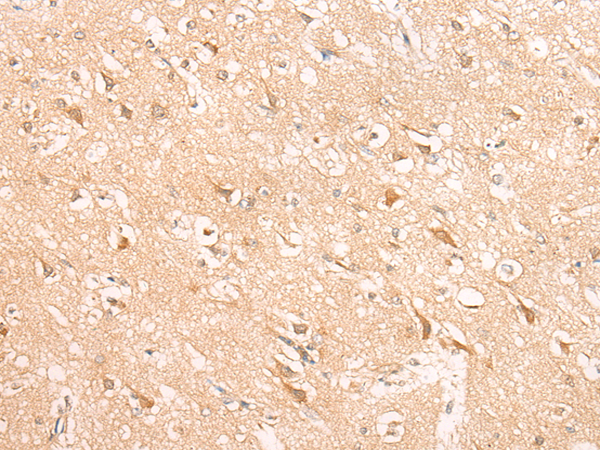
| WB | 咨询技术 | Human,Mouse,Rat |
| IF | 咨询技术 | Human,Mouse,Rat |
| IHC | 1/20-1/100 | Human,Mouse,Rat |
| ICC | 技术咨询 | Human,Mouse,Rat |
| FCM | 咨询技术 | Human,Mouse,Rat |
| Elisa | 1/2000-1/5000 | Human,Mouse,Rat |
| Aliases | TUP1; DGCR1; TUPLE1 |
| Host/Isotype | Rabbit IgG |
| Antibody Type | Primary antibody |
| Storage | Store at 4°C short term. Aliquot and store at -20°C long term. Avoid freeze/thaw cycles. |
| Species Reactivity | Human, Mouse |
| Immunogen | Synthetic peptide of human HIRA |
| Formulation | Purified antibody in PBS with 0.05% sodium azide and 50% glycerol. |
+ +
以下是3篇与HIRA抗体相关的文献摘要,供参考:
---
1. **文献名称**:*The HIRA histone chaperone complex modulates the cell cycle and histone H3.3 deposition*
**作者**:Ray-Gallet D, et al.
**摘要**:该研究揭示了HIRA复合体在细胞周期中调控组蛋白H3.3沉积的机制,通过免疫沉淀和免疫荧光实验(使用HIRA特异性抗体)证明HIRA在S期外沉积H3.3.维持染色质稳定性。
---
2. **文献名称**:*HIRA directs de novo centromere formation through histone H3.3 deposition*
**作者**:Polo SE, et al.
**摘要**:研究发现HIRA通过沉积组蛋白H3.3调控新生着丝粒的形成。Western blot和ChIP实验(依赖HIRA抗体)表明HIRA缺失导致染色体分离异常,提示其在表观遗传调控中的关键作用。
---
3. **文献名称**:*Mutations in the HIRA gene cause a syndrome of congenital heart defects and developmental delay*
**作者**:Zarate YA, et al.
**摘要**:本文报道了HIRA基因突变与先天性心脏病及发育迟缓的关联,通过免疫组化(使用HIRA抗体)分析患者样本,发现HIRA蛋白表达异常与染色质重塑缺陷相关。
---
如需具体文献来源,可进一步通过PubMed或期刊数据库检索DOI/PMID获取全文。
The HIRA (Histone Cell Cycle Regulation Defective Homolog A) antibody is a tool used to study the HIRA protein, a conserved eukaryotic chaperone critical for chromatin remodeling and histone deposition. HIRA, first identified in *Saccharomyces cerevisiae* as a regulator of histone gene expression, plays a key role in the replication-independent incorporation of the histone variant H3.3 into chromatin. This process is essential for maintaining genome integrity, transcriptional regulation, and epigenetic memory during cellular processes like DNA repair and development. The HIRA complex, comprising HIRA, UBN1. and CABIN1. facilitates H3.3 deposition at gene regulatory regions and sites of active transcription.
Research using HIRA antibodies has highlighted its involvement in embryogenesis, cellular differentiation, and senescence. Dysregulation of HIRA is linked to developmental disorders (e.g., DiGeorge syndrome) and cancers, where altered H3.3 dynamics influence oncogenic or tumor-suppressive pathways. In immunology, HIRA’s role in antigen presentation via MHC class II molecules underscores its broader functional relevance.
HIRA antibodies are widely employed in techniques like Western blotting, immunofluorescence, and ChIP-seq to map H3.3 localization and investigate chromatin-related mechanisms. Recent studies also explore HIRA’s interaction with viral pathogens, revealing its impact on viral latency and host defense. As a reagent, the antibody enables precise exploration of histone dynamics, offering insights into epigenetic regulation and disease pathogenesis.
×